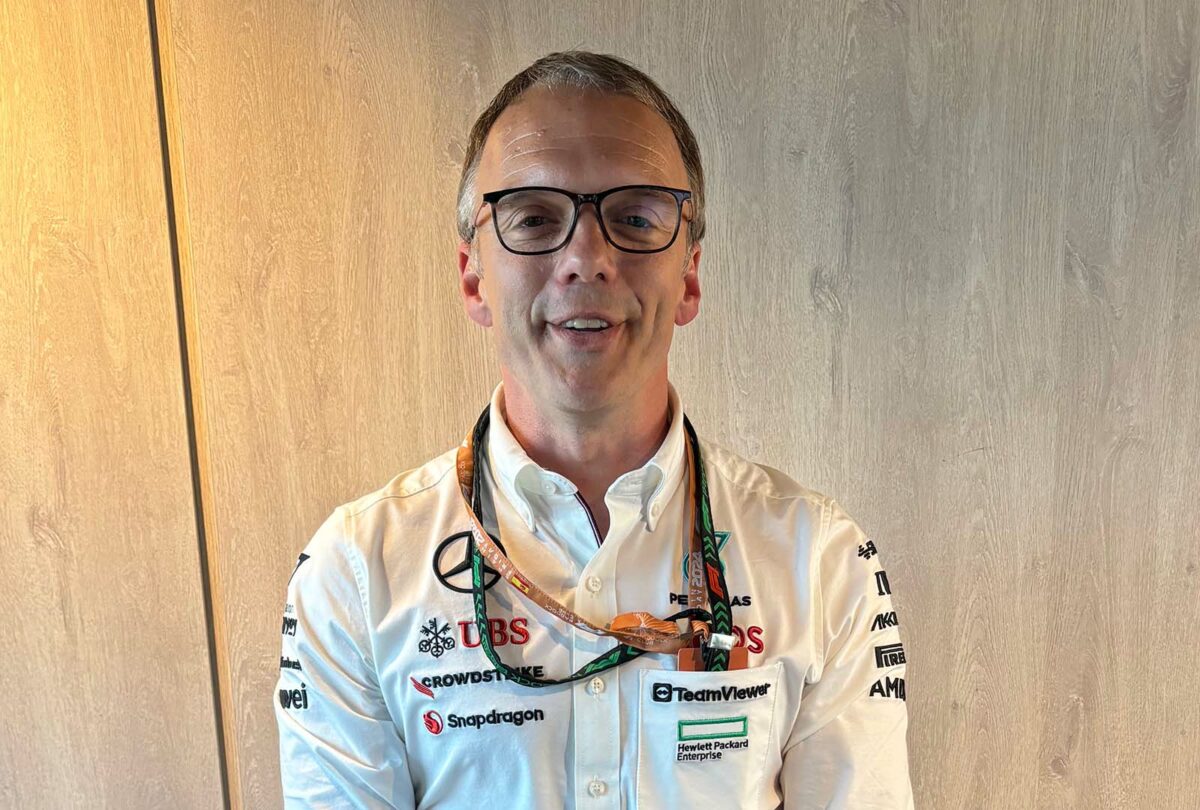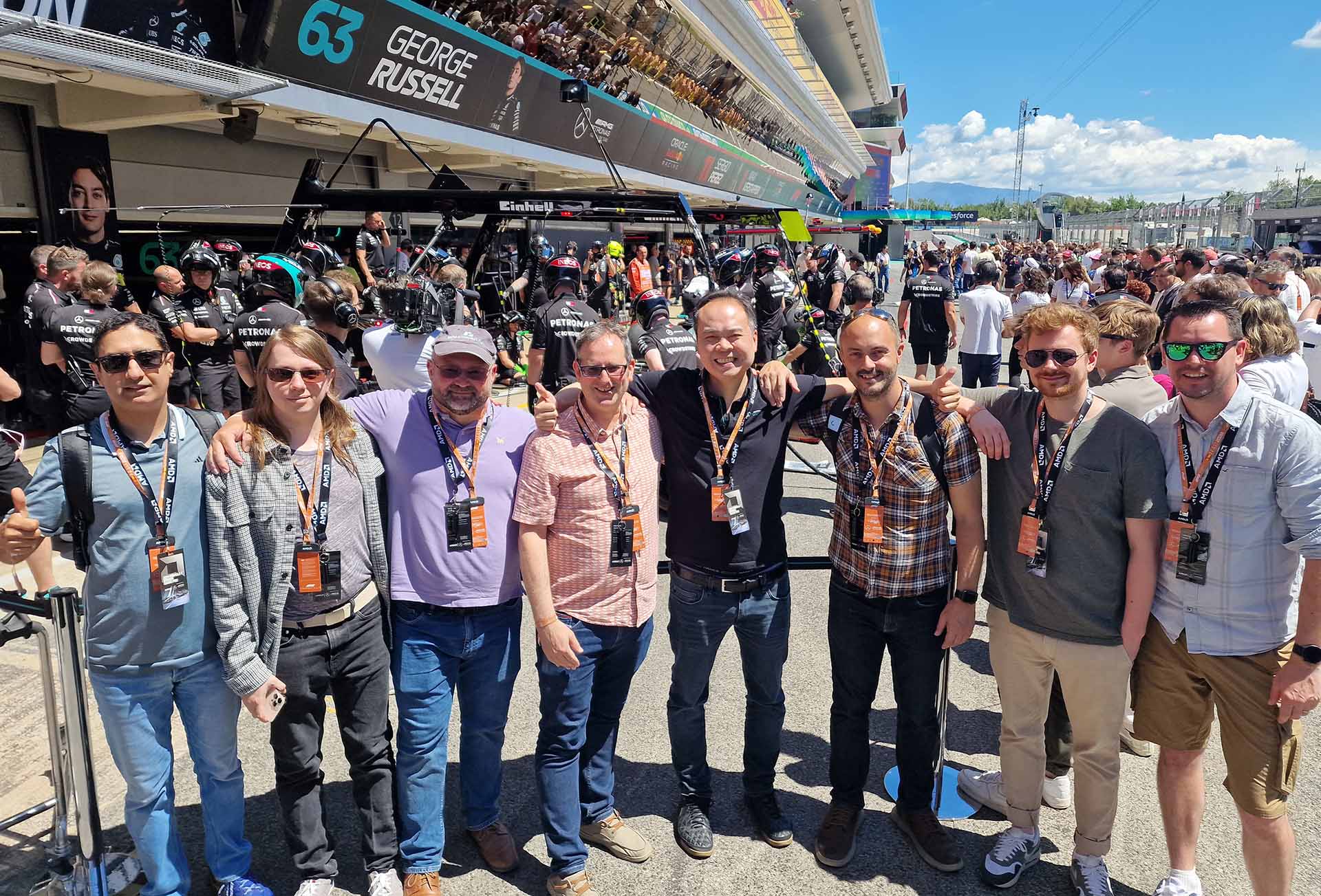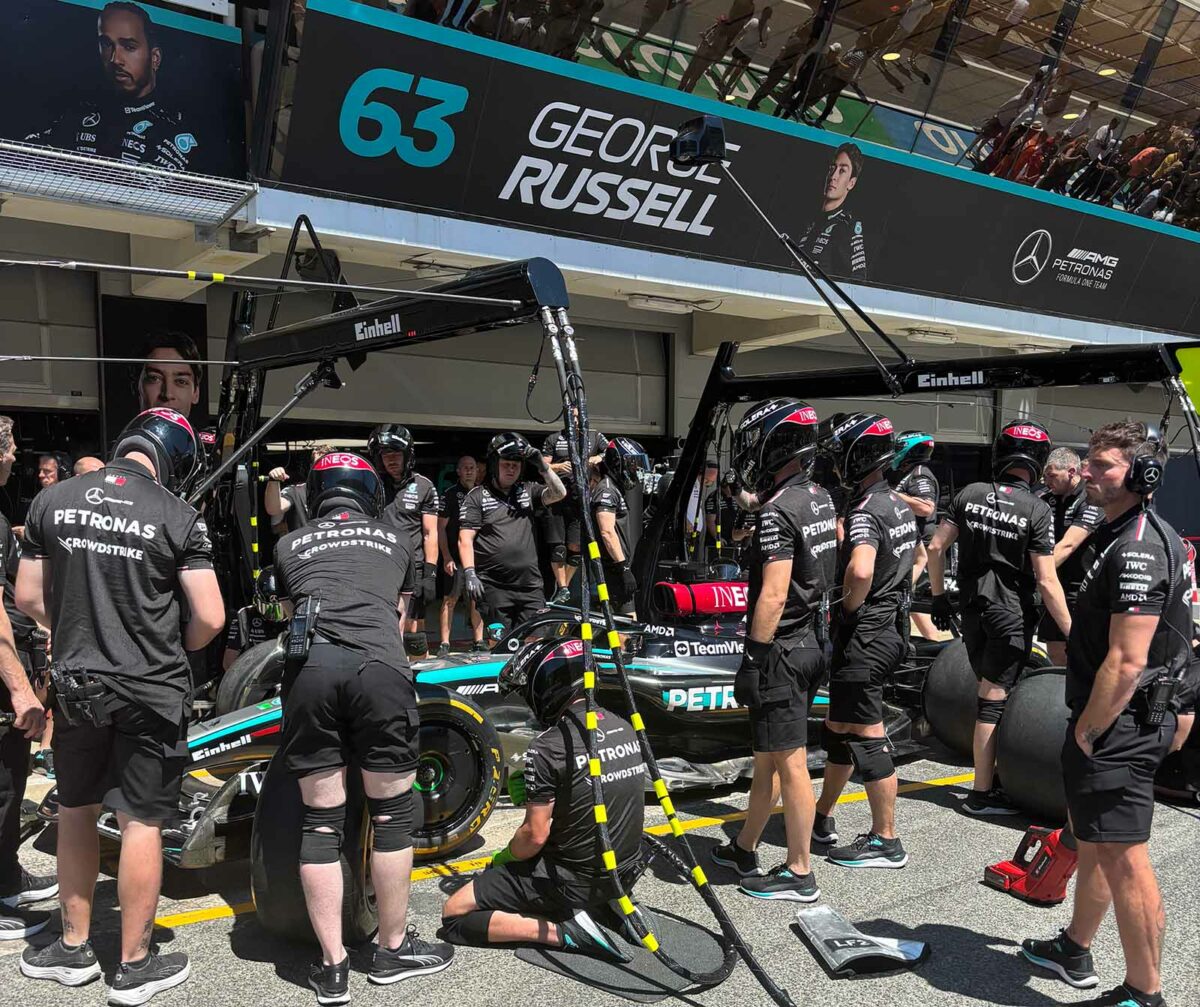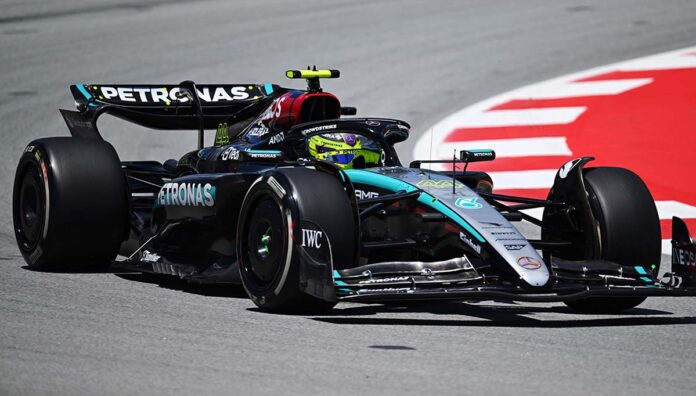The desire for improvement and success are key human traits. Modern sports are popular because they liberally tap into these conditions. Nowhere is this better exemplified than in Formula One, long considered the pinnacle of motor racing. Operating at the intersection of cutting-edge technology and ambition, it’s easy to see why it has millions of ardent followers around the world.
A keen F1 follower in the days of Senna and Mansell – now I’m showing my age – I recently chatted to Michael Taylor, IT Director for the Mercedes-AMG Petronas Formula One team. His challenging job is to oversee the increasingly important role of technology within a sphere where on-track success and failure are measured in milliseconds.
Talking tech with Mercedes-AMG Petronas’ IT Director
Sitting in the hectic confines of the F1 paddock during free practise during the Spanish Grand Prix in Barcelona, Michael cuts an impassioned figure when talking about juggling the many spinning technical plates that need to align for the best possible performance.
Though overall team budget runs into well over $100m per year – and it’s fair to say a decent chunk of that is devoted to data-driven technology – the obvious truth is that F1 hasn’t changed at its very core. “Prior to the F1 World Championship, back in the early 1900s, the stopwatch was the key metric… and it is still today,” reinforcing the salient notion that it’s first to the chequered flag that matters. Everything else is subservient to that ultimate goal. Nevertheless, Taylor acknowledged that data and analytics has changed markedly over time.
Being able to generate lots of data is great, but the key is to use that data meaningfully.
Michael Taylor, Mercedes-AMG Petronas IT Director
“In my 20 or so years in the sport, the biggest change I’ve seen around data is the amount of compute and storage capacity. Large-scale compute is more realistic and accessible these days. Being able to generate lots of data is great, but the key is to use that data meaningfully. Keep in mind in the 2000s data storage trackside would have been relatively small. 22 years ago, my first experience was an HP Vectra PC with SCSI-attached drives. These days we’re running all-flash arrays on mobile datacentres with many 100s of terabytes of storage available.”
Armed with all this data and analytics, pre-race simulation is more robust than ever. Teams like Mercedes-AMG Petronas map out practically every scenario possible with a view of potentially changing actual race strategy should the data indicate an advantage can be sought. Of course, other teams are doing exactly the same thing, leading to an ever-escalating IT race. I was curious exactly how Taylor and his team extract the most meaningful insights from potentially millions of parameters.

“The data we use on the strategy side of the organisation is a combination of the log data that receive from the car live in session, and it’s also an accumulation of all the processes we have back in the factory, including historical analyses of previous events. We try to bring all of that together by also using a predictive model to calculate how things are going to play out.
Prior to the race on Sunday, we’ll have run thousands, if not millions, of simulations on the data that we’ve collected both historically and over the weekend. It’s important to note that we do run competitor analysis. We monitor all the data that’s freely and publicly available to build a performance picture and try to understand how their weekend is going. We take a combination of the log data, statistical analysis, previous events, environmental, climatic, GPS traces, timings, and feeds. Putting this together gives us an idea of the performance for rival teams. This is all mainly focussed on lap times and tyre degradation, thus giving us an insight into pitting strategy. For Mercedes-AMG Petronas, as the grand prix laps tick off, we’re feeding all of our captured data and run further simulations. But all of this doesn’t take into account the most important factors, which the human element and the weather. Track temperature can have a profound effect on tyre performance these days.”
Lewis Hamilton versus data
This data versus experiential driver and engineer feedback fascinates me. On the one hand, the data may paint a certain picture while Lewis Hamilton or George Russell may have a contrarian view. Many times, I’ve heard Lewis complain about understeer through certain corners or a perceived lack of downforce. I was curious how Michael helps reconcile potentially conflicting insights from data and driver.
The younger generation of drivers have been brought up on as much data as possible.
Michael Taylor, Mercedes-AMG Petronas IT Director
“That’s a great question. It very much varies depending upon circumstance. We have a fantastic engineering team that has spent years learning the language of a driver. There’s a skill with interpreting driver feedback into a corresponding data-based language. If there are conflicts, we can’t blindly trust the data. The beauty is that as the fidelity of the data improves, the drivers effectively become more expansive in terms of data engineers themselves; the two worlds start to come together. Certainly, the younger generation of drivers have been brought up on as much data as possible.”
Inundated with overload from myriad sensors whilst having continual physical feedback from the car itself, I wanted to know how modern drivers are able to filter out the noise and focus on the job at hand. It’s a very real skill to detach yourself from all the extraneous detractions when nailing the braking spot at 300km/h. Michael agreed. “Someone described it to me one day as when the drivers are doing things that for us would be at normal speed, they have an ability to slow everything around them by a factor of 10. When a driver is on the radio, mid-race, asking questions about strategy, they have this amazing ability to take in so much and process it in a way that they’re able to articulate it without losing focus. They’re all elite athletes.”

At the beginning of the F1 AI story
Switching gears, if you excuse the pun, I wanted to find out how a Formula One team views the emergence of AI and what benefits can accrue from it. Right now, Mercedes-AMG Petronas uses pockets of generative AI to help them operationally more so than for strategy. It’s used to save time in areas such as voice-to-text translation and optimising code. “One of the challenges we face is the deterministic nature of the problem we’re trying to solve. We want to optimise the car for the exact point in time when it’s on the track. Generative AI is not the best for problems like these. There will be a time in the not-too-distant future when the reality of taking the data that we have and turning that into learning data, where AI is able to optimise the setup and configuration of a car, though it’s not something that actively exists today.”
We’re actually regulated on how many teraflops of compute power we can use in a particular period.
Michael Taylor, Mercedes-AMG Petronas IT Director
The recent F1 spending cap dictates how much every team can spend on developing and building their race cars, helping even the playing field and thus promoting closer competition between first and last place. Nevertheless, with F1 straddling cutting-edge technology from materials to design, I wondered what Mercedes-AMG Petronas could do with an unlimited amount of computing horsepower. What would Michael do if AMD, a car sponsor, rocked up with hundreds of latest-generation Epyc and Instinct servers and said fill your boots.
“It’s not something I’ve given too much thought to, mainly because of the way in which we’re heavily regulated by the FIA in terms of computational fluid dynamics (CFD) and high-performance computing. We’re actually regulated on how many teraflops of compute power we can use in a particular period. We’re also limited in how much time we can spend in a physical wind tunnel to an eight-week block in a year. If you spoke to most teams, having an unlimited amount of compute would go towards enhancing CFD for quicker aerodynamic development.”
Predicting closer championships in the future
Looking toward the future, Michael believes big speed-related innovations have already been discovered. “We’re at the point now where there are much more iterative and incremental gains. It’s certainly becoming much closer, where the top 10 is split by a few tenths of a second [on qualifying laps].” Underscoring Michael’s comments, this season’s championship is far closer, hinting at greater technological equality between teams. I’d like to think dominance from one team is akin to empires of old; they will eventually fall and give rise to challengers who ascend the performance throne. This has happened to Ferrari, Williams, McLaren, and Red Bull over the last 30 years, and if I were a betting man, it’ll happen again either next year or the one after.

Talk of technology, especially within the bleeding-edge remit imposed by F1, is wonderfully fascinating. Nevertheless, it’s the driver who ultimately takes on the responsibility of piloting a slippery car producing well in excess of 1,000BHP per tonne. To this point, I wanted to know who is Michael’s favourite F1 driver of all time.
“Gosh, this could be really controversial! Lewis is a fantastic driver and amazing human being. I have a huge amount of respect for the amount of work he does on the track and off it, for the greater good of the wider community. Historically, when I was growing up, Nigel Mansell was a key part of my childhood. He made racing interesting in not only F1 but also Indy Car. I also have a bit of a soft spot for Fernando Alonso, with whom I worked alongside at Renault many years ago. He was an amazing young guy who burst on the scene and gave two years of championship success for the team. Of all the drivers, Lewis stands alone for me.”
